This date, July 9, in 1944, U.S. forces took Saipan, causing the downfall of the Tojo government.
Photo: LVTs heading for shore on June 15, 1944. USS Birmingham (CL-62), a Cleveland class light cruiser in the foreground; the cruiser firing in the distance is the USS Indianapolis (CL/CA-35), a Portland class heavy cruiser.
The Battle of Saipan was fought on the island of Saipan in the Mariana Islands from June 15 to July 9, 1944. The Allied invasion fleet embarking the expeditionary forces left Pearl Harbor on June 5, 1944, the day before Operation Overlord in Europe was launched.
The U.S. 2nd Marine Division, 4th Marine Division, and the Army's 27th Infantry Division, commanded by Lieutenant General Holland Smith, defeated the 43rd Infantry Division of the Imperial Japanese Army, commanded by Lieutenant General Yoshitsugu Saito.
The loss of Saipan, with the death of at least 29,000 troops and heavy civilian casualties, precipitated the resignation of Japanese Prime Minister Hideki Tōjō and left the Japanese mainland within the range of United States Army Air Forces B-29 bombers.
In the campaigns of 1943 and the first half of 1944, the Allies had captured the Solomon Islands, the Gilbert Islands, the Marshall Islands and the Papuan Peninsula of New Guinea. This left the Japanese holding the Philippines, the Caroline Islands, Palau Islands, and Mariana Islands. U.S. planners planned to bypass the Carolines and Palauan islands and to seize the Marianas and Taiwan. From these latter bases, communications between the Japanese archipelago and Japanese forces to the south and west could be cut. From the Marianas, Japan would be well within the range of an air offensive relying on the new Boeing B-29 Superfortress long range bomber with its operational radius of 1,500 miles.
The bombardment of Saipan began on June 13, 1944. 15 battleships were involved, and 165,000 shells were fired. Seven modern fast battleships delivered 2,400 16 inch-shells, but to avoid potential minefields, at a range of 10,000 yards or more. The amphibious landings began at 07:00 on June 15, 1944. More than 300 LVTs landed 8,000 Marines on the west coast of Saipan by about 09:00. Eleven fire support ships covered the Marine landings: the battleships Tennessee and California, the cruisers Birmingham and Indianapolis, the destroyers Norman Scott, Monssen, Coghlan, Halsey Powell, Bailey, Robinson, and Albert W. Grant.
Careful artillery preparation and placing flags in the lagoon to indicate the range, allowed the Japanese to destroy about 20 amphibious tanks. Strategically placed barbed wire, artillery, machine gun emplacements, and trenches were placed to maximize the U.S. casualties. By nightfall, the 2nd and 4th Marine Divisions had a beachhead about 6 miles wide and 0.5 mile deep.The Japanese counterattacked at night but were repulsed with heavy losses.
On June 16, units of the U.S. Army's 27th Infantry Division landed and advanced on the airfield at Ås Lito. Again the Japanese counterattacked at night. On June 18, Saito abandoned the airfield.
The invasion surprised the Japanese high command, which had been expecting an attack further south. Admiral Soemu Toyoda, Commander-in-Chief of the Imperial Japanese Navy (IJN), saw an opportunity to use the A-Go force to attack the U.S. Navy forces around Saipan. On June 15, he gave the order to attack. But the resulting battle of the Philippine Sea was a disaster for the IJN, which lost three aircraft carriers and hundreds of planes.
Without resupply, the battle on Saipan was hopeless for the defenders, but the Japanese were determined to fight to the last man. Saito organized his troops into a line anchored on Mount Tapotchau in the defensible mountainous terrain of central Saipan. The nicknames given by the Americans to the features of the battle: "Hell's Pocket,” "Purple Heart Ridge" and "Death Valley,” indicate the severity of the fighting. The Japanese used the many caves in the volcanic landscape to delay the attackers, by hiding during the day and attacking at night. The Americans gradually developed tactics for clearing the caves by using flamethrower teams supported by artillery and machine guns.
By July 6, the Japanese had nowhere to retreat. Saito made plans for a final suicidal banzai charge. On the fate of the remaining civilians on the island, Saito said, "There is no longer any distinction between civilians and troops. It would be better for them to join in the attack with bamboo spears than be captured."
At dawn of the 7th, a group of 12 men carrying a great red flag in the lead, the remaining able-bodied troops, about 4,000 men, charged forward in the final attack. Amazingly, behind them came the wounded, bandaged, using crutches, and barely armed. The Japanese surged over the U.S. front lines, engaging both Army and Marine units. The 1st and 2nd Battalions of the 105th Infantry Regiment were almost destroyed, losing over 650 killed and wounded. Tthe fierce resistance of these two battalions, as well as that of Headquarters Company, 105th Infantry, and of supply elements of 3rd Battalion, 10th Marine Artillery Regiment, resulted in over 4,300 Japanese killed.
For their actions during the 15 hour Japanese attack, three men of the 105th Infantry Regiment were awarded the Medal of Honor: Lt. Col. William O'Brien, Cpt. Ben L. Salomon, Pvt. Thomas A. Baker, all posthumously. The attack on July 7th would be the largest Japanese Banzai charge in the Pacific War.
By 16:15 on July 9, Admiral Turner announced that Saipan was officially secured. Saito, along with commanders Hirakushi and Igeta, committed suicide in a cave. Vice-admiral Chuichi Nagumo, the naval commander who led the Japanese carriers at Pearl Harbor, also committed suicide in the closing stages of the battle.
While the battle officially ended on July 9, Japanese resistance still persisted with Captain Sakae Ōba and 46 other soldiers who survived with him during the last banzai charge. After the battle, Oba and his soldiers led many civilians throughout the jungle of the island to escape capture by the U.S., while also conducting guerrilla attacks. The Americans tried numerous times to hunt them down but failed due to their speed and stealth.
In September 1944, the Marines began conducting patrols in the island's interior, searching for survivors who were raiding their camp for supplies. Although some of the soldiers wanted to fight, Captain Ōba asserted that their primary concerns were to protect the civilians and to stay alive to continue the war. At one point, the Japanese soldiers and civilians were almost captured by the Americans as they hid in a clearing and ledges of a mountain, some were less than 20 feet away, but the Americans failed to detect them. Oba's holdout lasted for over 16 months before finally surrendering on December 1, 1945, three months after the official surrender of Imperial Japan.
Being a former Spanish and then German territory, Saipan became a Mandate of Japan by the League of Nations after World War I, and at least 25,000 Japanese civilians lived there. The U.S. erected a civilian prisoner encampment on June 23, 1944, that soon had more than 1,000 inmates. Electric lights at the camp were conspicuously left on overnight to attract civilians with the promise of three warm meals and no risk of accidentally being shot in combat.
Cclose quarter fighting tactics also resulted in high civilian casualties. Civilian shelters were located virtually everywhere on the island, with very little difference noticeable to attacking marines. The standard method of clearing suspected bunkers was with high explosive augmented with petroleum (e.g., gelignite, napalm, diesel fuel). In such conditions, there were high civilian casualties.
Emperor Hirohito found the threat of defection of Japanese civilians disturbing. Much of the community was of low caste, and there was a risk that civilian survivors would be surprised by U.S. treatment. Native Japanese sympathizers would hand the Americans a powerful propaganda weapon to subvert the "fighting spirit" of Japan in radio broadcasts. At the end of June, Hirohito sent out an imperial order encouraging the civilians of Saipan to commit suicide. The order authorized the commander of Saipan to promise civilians who died there an equal spiritual status in the afterlife with those of soldiers perishing in combat. More than 1,000 Japanese civilians committed suicide in the last days of the battle to take the offered privileged place in the afterlife, some jumping from places later named "Suicide Cliff" and "Banzai Cliff.”
With the capture of Saipan, the U.S. military was now only 1,300 miles away from the home islands of Japan. The victory would prove to be one of the most important strategic moments during the war in the Pacific Theater, as the Japanese mainland was now within striking distance of B-29 bombers.
The loss of Saipan was a heavy blow to both the military and civilian administration of Japanese Prime Minister Hideki Tōjō. According to one Japanese admiral: "Our war was lost with the loss of Saipan."
From this point on, Saipan would become the launch point for retaking other islands in the Mariana chain and the invasion of the Philippines in October 1944. Four months after capture, more than 100 B-29s from Saipan's Isely Field were regularly attacking the Philippines, the Ryukyu Islands and the Japanese mainland. Japanese aircraft attacked Saipan and Tinian on several occasions between November 1944 and January 1945. The U.S. capture of Iwo Jima (February 19 – March 26, 1945) ended further Japanese air attacks.

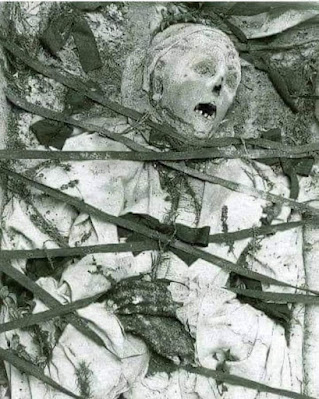
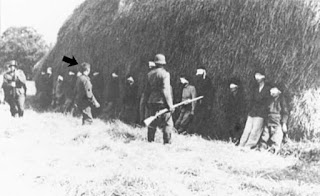

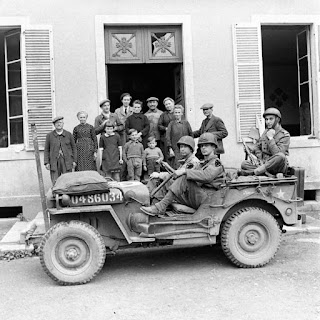




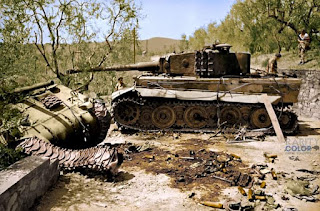
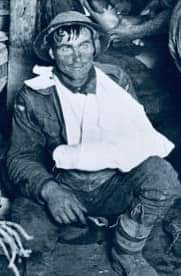
Comments
Post a Comment